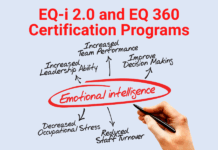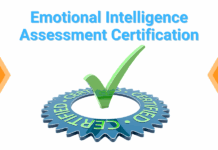
How can you lead by listening?
Everyone has had a struggle when it comes to workplace toxicity. At times, addressing the dynamics and, let’s face it, the drama that can arise feels like an insurmountable goal. Is it possible to reverse an unhealthy work environment? How can we approach the members of our team and repair broken trust?
Jathan Janove is an organizational interventionist, employing lessons from his 25 years of litigating toxic workplace relationships. He works with employers to improve leadership, accountability, and employee engagement. He's an award winning author whose latest book is Hard-Won Wisdom: True Stories From the Management Trenches. I recently interviewed Jathan on the LEADx podcast to dig into the ways we can create a welcoming workplace. (The interview below has been edited for space and clarity.)
Kevin Kruse: You say when it comes to making an apology we need to remember to use the ‘MIDAS touch.’ What is that?
Jathan Janove: The “Midas touch” was me trying to come up with something that I could help people and, as my wife would say, maybe help myself so that I didn't screw up or they didn't screw up an apology.
I've actually coached people where I've said it: put a sticky in your hand and write M-I-D-A-S so they avoid making the “But” mistake. Have you ever been on the receiving end of an apology and had the word “But” in it?
Kruse: It just cancels out everything that came before.
Janove: It erases it all because you know what's coming. It's going to be an excuse, justification, rationalization, or counter attack: “But Kevin, you're an even bigger jerk.” Apology accepted? Basically this design is to keep the “But” out. It stands for the Midas touch; the M is “Mistake.” What I say to people is to “know their mistake.” It's not “other mistakes were made.” Identify your mistake. A mistake has a simple definition that if you had to do it over again, you would've done it differently.
Your mistake caused an injury. The fact that nobody lost money, that doesn't matter. When somebody is upset, you caused an injury. It's not if: “I'm sorry if I offended you.” It's not, “I'm sorry if my comment offended you.” As if I should be mad at the comment, I'm mad at the person. Don't distance it. “I made a mistake, it caused you injury.”
The D is critical in that it shows that this isn't a faux apology. I'm going to do things “Differently.” Tell them what you're going to do differently going forward. Otherwise, have you been on the receiving end of an apology that you know it's not sincere? Call up a customer service person with an issue with your wireless account, and count how many times they apologize to you. How sincere is that apology?
Kruse: They’ve never said what they’ll do differently next time.
Janove: What I say is you've got to have the “D” because otherwise, you're just like calling up one of those big accounts. You're in that same road train drilled into customer service representative. Faux apology. What are you going to different?
Then the “A” is for “Amends.” It's a concrete gesture that says I really want to heal this wound. People say, is there a standard amends? I say absolutely not. It might be a potted plant. One of my favorites is when I've offended and feel guilty is I'll tell people in a different city. I'll say ask their spouse or significant other what's his or her favorite restaurant in that city. Then give me a date, time, place. I'll call over there, and it's on my credit card.
They will usually say, “No, you don't need to do that.” I say, “I'm not doing you a favor, you're doing me a favor because I feel the need to make amends.” You having a wonderful dinner out with your spouse on me is actually doing me a favor. Again, it doesn't need to be a meal. It's just something concrete that says, “I mean what I'm saying. I want to restore this bond that's been broken or put at risk.”
The “S” is real simple. “Stop.” Don't say another word because that's when the “But” temptation is going to come out. I think one of the stories in the book. I'll tell even a lawyer can apologize. It takes a little bit more work with them. I'll never forget.
“If I didn't have that sticky note in my hand”, she said, “I would have blown it because by the time I got to ‘S’ I so wanted to explain. I looked at that ‘S,’ and I bit my lip and I gritted my teeth and I kept my mouth shut.”
Then what she said was, “The most amazing thing happened, he (the person that was mad at me) said all the things I wanted to say. Pointed out the other mistakes that others had made. Said everything I was dying to say and instead, he said it and he concluded with ‘I think we could still work together’. I think this relationship can continue and work for both of us.”
I say, let them say it. You stop. That's really what it is and that's how I've kind of hit on it and stuck on it and continued to hear from people.
Of course, practice what you also preach. My most recent one was in the past week. It's like okay, well you're saying it, now practice it. That's really, Kevin, the background on this Midas touch apology.
Kruse: You say to communicate effectively, we need to use the ‘Ear method.’ E-A-R. What is that?
Janove: This was something I read back in the ‘90s. I don't know who originally came up with it. I actually tried to find it but it stuck with me back then. It's ‘Explore,’ ‘Acknowledge,’ and ‘Respond.’ E.A.R.
What I like about it and what I think is most valuable about is the way the letters line up. It's a sequence. You start with the “E’”, which is ‘Explore’. Ask open-ended questions: “Kevin how do you see it? What do you think? What are some examples?” These are open-ended questions where the listener is actually exploring the other person’s view.
The “A,” which is “Acknowledge” is where the listener confirms his or her understanding with the speaker. “Kevin, if I understand you correctly, your concern about the new leave policy is X. Is that right?” That's the “A.” If you say yes, then–and only then–do I move to the “R,” which is my “Response.”
If you say, “No, X is not what my primary concern is. What do I do?” I go back to the “E.” “Sorry Kevin, what did I miss?” In other words, it's only when you've confirmed with me that I move to the “R.”
Kruse: You're saying you really need to paraphrase and explain what you believe you just heard. This is the chance to make sure you're getting it right.
Janove: Yes, exactly Kevin. It's not a right-brain trick. It's a left-brain confirmation. I tell people that you get that right brain feel good warm and fuzzy, but the way you approach it when you're in the “E” is: What is this person saying that is of importance to them and that keeps you engaged without thinking about a mirror or pacing technique? I better make sure I have good eye contact. I'm nodding my head. This makes you focus on them, on what they're trying to convey. I say, think of the “A” as your quiz. The “E” is your homework, your study, and then you take the test.
The good news is if you flunk the test, you get an immediate retake. “Kevin, is this what upsets you?” If you answer, “No,” then all right, flunk the test but I get an immediate retake.” If you say, “Yes,” then okay I pass the test. Now, I'm eligible to “Respond.” I think that's the beauty of the E.A.R is that sequence. Also, I think what you point out, which is the A is essentially so they know that you understand what they think is important.
Kruse: I like to challenge our listeners to become one percent better every day. Do you have something you want to challenge us to do today?
Janove: This is one I think, and maybe just working off the E.A.R. because we just talked about it. What I would say is no assumptions―or as I like to pronounce it―assumptions. No assumptions. For 25 years when I was a labor employment litigator, I made a living on workplace misery. Relationships that started out win-win and ended up toxic lose-lose. In every single one of them, there was a common disease, and it was the erroneous assumption about the other person. These conflicts, this toxicity, this erosion of trust were all built on a foundation of assumptions. They weren't communicating; they were making assumptions. What I try to encourage people… and the E.A.R. method is a great tool for it because if you truly follow the method, you can't make an erroneous assumption. Why? Because the “A” in E.A.R. is going to expose it. Your “R,” no matter what it is, will not rest on an assumption you made.
The test challenges us to start with that. When somebody does something or says something that immediately causes you to form a certain conclusion: “Oh, there they go again” or “That's good or that's bad.” That's the inclusion. Ask yourself, “Am I making an assumption?” This was something I learned from Marshall Goldsmith: “Is this just an opinion, or is there empirical evidence to support your position?” Just stopping and asking yourself that, I think, can save so much unnecessary grief.
That would be challenge. The next time, which will probably happen for your listeners or readers in the next ten minutes that something happens, they read something, or hear something, just say, “Am I making an assumption? Are there any assumptions underlying how I feel or what I think that I haven't really tested?” Then that can lead you to the next step, which is, “What do I do?”





